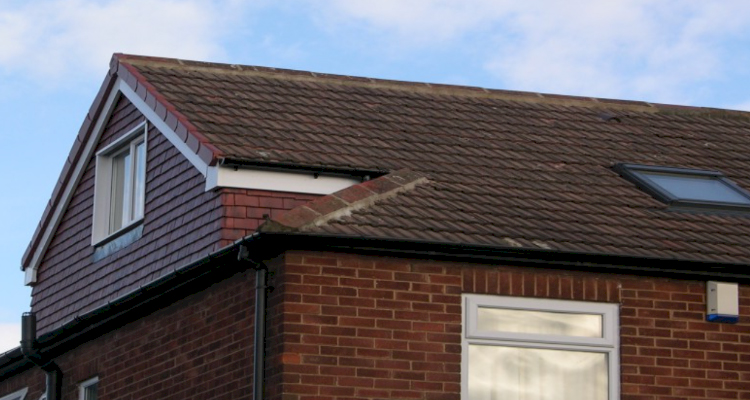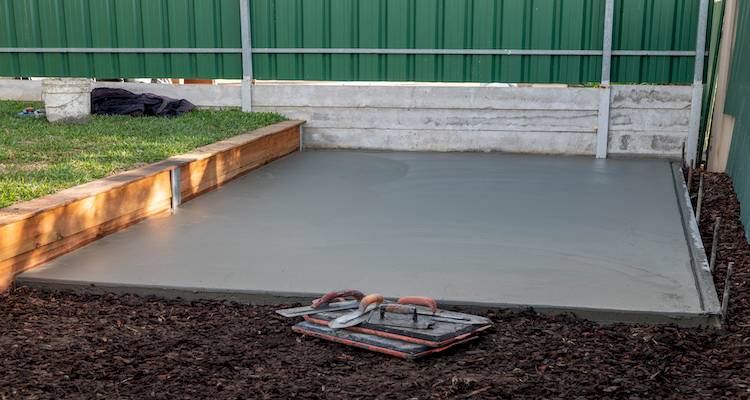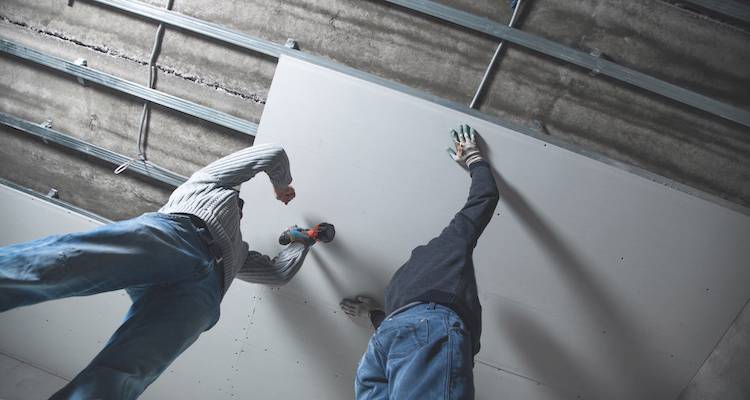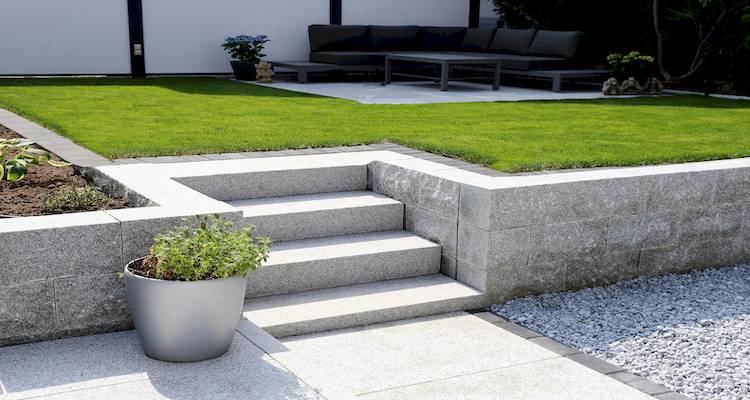Lean-To Conservatory Cost
- The average lean-to conservatory cost is around £5,800.
- Lean-to conservatories take between 7 to 10 days to build.
- A breakdown of the average lean-to conservatory cost for different types of material.
- How long it will take a professional conservatory company to build a lean-to conservatory, and an idea of the steps involved.
- How to find and hire a local conservatory builder near you.
What is a lean-to conservatory?
A lean-to conservatory is an additional room which has a flat, angled, sloping roof. It's the simplest and quickest type of conservatory to build, working well in small spaces, and is easily the most popular type of conservatory in the UK.
How much does an average lean-to conservatory cost?
In the UK, lean-to conservatories cost around £5,800. The exact figure will depend on the size, materials used, and complexity of the design.
In this guide, we cover everything you need to know about the cost of a new lean-to conservatory in the UK. This includes a breakdown of conservatory prices, other jobs you might want to get done at the same time, and much more!
Ready to get a quote for this job now?
Use MyJobQuote to get free, no obligation quotes from lean-to conservatory builders near you. It's fast, easy, and connects you with local professionals.
Want to find out more before you start comparing lean-to conservatory prices?
Keep reading!
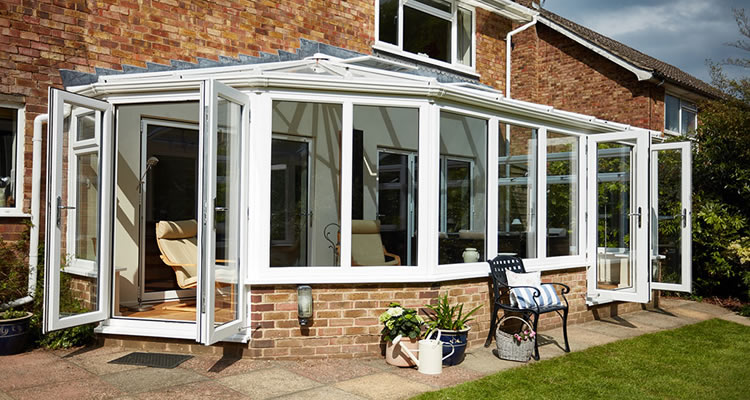
£5,800
Table of Contents
- How Much Does a Lean-To Conservatory Cost?
- Lean-To Conservatory Prices
- Additional Lean-To Conservatory Costs
- Which Lean-To Conservatory Material is Best?
- Can I Build a Lean-To Conservatory Myself?
- What Are The Building Requirements for Lean-To Conservatories?
- Checklist: Hiring a Lean-To Conservatory Installer
How Much Does a Lean-To Conservatory Cost?
So, how much does it cost to build a conservatory?
Lean-to conservatory prices vary depending on the exact size, material, and design. The typical lean-to conservatory cost is £5,800, taking between 7 and 10 days to construct.
Although lean-to conservatories are basic in design, there's a range of different options for the roof, walls, and framework, which give a lot of versatility, allowing you to adapt to suit almost any property.
A lean-to conservatory can be used in a number of ways, most commonly as an office, dining room or second lounge. The low-pitched roof works well in awkward spaces, and is a good choice for bungalows or small terraced properties.
Opting for a lean-to conservatory is far more affordable than the cost of a conservatory, which can be around £15,000 on average.
They are a great option if you've got a smaller budget or limited space. Modern lean-to conservatories are much better for energy efficiency, too. Double glazing and solid roofs keep the heat in better than older polycarbonate designs, so your heating bills won't be as high.
I'm thinking of getting a conservatory, but I'm worried that it will have a negative impact on our home's energy efficiency. Are some conservatories more thermally efficient than others?
Lean-To Conservatory Prices
| Job Description | Duration | Material Cost | Labour Cost |
|---|---|---|---|
| Lay a good thick concrete base for a typical lean-to conservatory | 2 days | £715 | £570 |
| To add three, 600mm high insulated cavity walls | 1 day | £385 | £285 |
| 4m x 2m uPVC conservatory kit (supply only) | N/A | £3,300 | £0 |
| 4m x 2m uPVC conservatory with polycarbonate roof and concrete base | 3 weeks | £4,400 | £5,200 |
Additional Lean-To Conservatory Costs
Along with the main lean-to conservatory costs, there are some extras you should budget for. Here are some of the additional costs that might come up.
Electrical Work
Most people want lighting and power sockets in their conservatory. Getting an electrician to do the basic work usually runs around £400 to £800. Ceiling fans or underfloor heating bump the price up. You'll need a Part P registered electrician, as it's the law.
Heating and Cooling
Conservatories get cold in winter, hot in summer. Extending your central heating runs £300 to £800 but largely depends on complexity and radiator costs. Electric underfloor heating works out at £75 to £100 per m². Summer air conditioning can be £800 to £1200 for an entry-level unit.
Flooring
The concrete base isn't great to walk on as it is. Ceramic tiles run £20 to £40 per m² fitted. Laminate flooring cost is cheaper at £8 to £30 per m². Natural stone costs more at £50 to £80 per m².
Planning Permission
You likely will not need planning permission for a lean-to conservatory, as long as it meets a specific criteria. Conservatories that do need planning permission, could cost £206 for householder applications. Building control might be required too for another £150 to £300.
Site Preparation
Ripping up old patios runs £10 to £20 per m². Tree removal cost varies from £150 to £350 per small tree. Removing old materials costs £100 to £300.
These extras usually bump your total up by 15% to 25%, so try to plan for them in your budget from the start.
Which Lean-To Conservatory Material is Best?
The main materials you'll choose from when building a lean-to conservatory are:
- uPVC
- Aluminium
- Hardwood
Depending on the material you choose, you'll encounter a different price:
Lean-To Conservatory Prices by Material
| Type of Material | Total Estimated Cost |
|---|---|
| uPVC | £5,500 - £6,000 |
| Aluminium | £7,000 - £8,000 |
| Hardwood | £9,000 - £12,000 |
Now, let's take a closer look at their individual prices in relation to their pros and cons to help you make a decision.
uPVC Lean-To Conservatory Cost
uPVC is by far the cheapest material for lean-to conservatories, as well as replacement windows and doors. uPVC frames are almost as durable as aluminium but require little to no maintenance - and are much more affordable.
uPVC lean-to conservatories cost between £5,500 to £6,000.
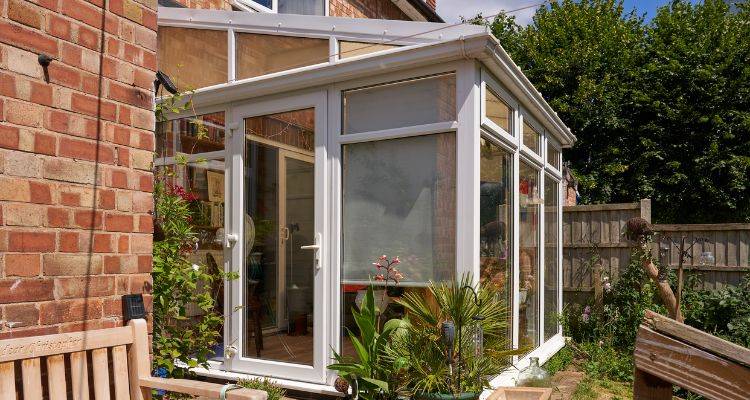
Pros
- ✔ Affordable, readily available - especially for standard-size builds
- ✔ Low maintenance
- ✔ Good energy efficiency
Cons
- ✖ uPVC can discolour over time
- ✖ Plastic might not be the most characterful choice for a lean-to conservatory
- ✖ Not easy to adapt for custom sizing
Are lean-to conservatories prone to leaking?
Aluminium Lean-To Conservatory Cost
Aluminium is more expensive than uPVC. This is because the material is stronger, allowing for thinner frames with more glass, which can enhance the appearance of your lean-to conservatory.
Aluminium lean-to conservatories cost between £7,000 to £8,000.
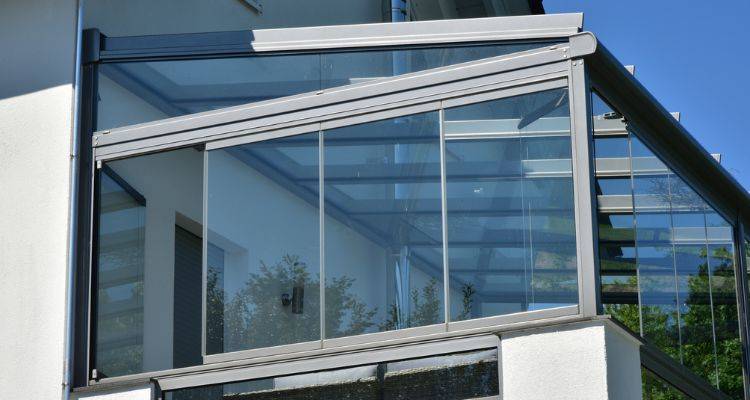
Pros
- ✔ Modern, sleek lines and better visibility from thin frames
- ✔ Durable, strong material
- ✔ Won't warp
Cons
- ✖ Higher upfront cost compared to uPVC
- ✖ Can be less insulating than uPVC
- ✖ Sleek appearance may look stark against more traditional, characterful properties
Hardwood Lean-To Conservatory Cost
Hardwood lean-to frames look best in older, traditional properties - especially those in conservation areas. But, wood is not as durable as an aluminium or uPVC lean-to conservatory, and the timber will require a lot of maintenance over the years.
Hardwood lean-to conservatories cost between £9,000 to £12,000.
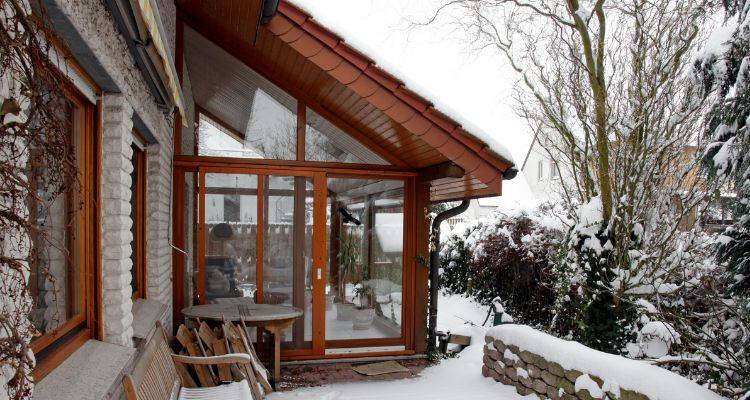
Pros
- ✔ Traditional, classic appearance
- ✔ Timber is naturally insulating
- ✔ If constructed to a high standard, timber lean-to conservatories can add value to your home
Cons
- ✖ Significantly more maintenance required than uPVC or aluminium lean-to conservatories
- ✖ High up-front cost, as well as the ongoing cost of maintenance
- ✖ Can be susceptible to rot, warping, and pest infestations
Just trying to find out if it could be cheaper to buy a conservatory and find a builder who could install it without doing any finishing work?
Can I Build a Lean-To Conservatory Myself?
If you're looking to save on labour costs, you can build a lean-to conservatory yourself using a pre-made kit. Doing this can save you between 30% to 50% of the total cost.
There are some things to bear in mind before you take on this task:
- Make Sure Your Measurements Are Correct - Check your measurements, both in terms of the conservatory size and the space that you have allowed. Most conservatory frames and other parts come with a guarantee, but this will not be of any help if the conservatory does not fit the base you intend to lay it on. Any alterations or modifications will likely invalidate the guarantee.
- Confirm Your Design - Most DIY conservatory kits are modular, made up of standard-size parts which fit together and are often interchangeable, which means that you can change the door position to suit.
- Check If You Need Planning Permission - In some cases, a planning permission application will be required for a DIY lean-to conservatory, which can take up to 10 weeks for approval - even if doing a DIY build.
When you're happy with the preliminary steps, you can order your lean-to conservatory kit and move forward with its construction.
How Do I Build a Lean-To Conservatory Kit?
The actual fitting of a lean-to conservatory kit is quite an easy job, requiring basic DIY skills and patience. Most DIY conservatory kits come with full instructions, so you should be able to assemble everything relatively painlessly.
Here are the general steps you'll take when constructing a lean-to conservatory kit:
- Once you've received your conservatory kit, check you have everything. Double-check sizes, then lay out all the frames in the right positions to begin the construction.
- Before you build the conservatory, you'll need to construct a solid base first.
- Once the base is down and has had time to dry, then you can construct the dwarf walls (if applicable).
- If you require electrical sockets, ceiling fans, or internet connections, plan these services out before constructing the dwarf walls. Always contact a qualified electrician for help and advice in terms of when these items can and should be installed.
- All the fixings required should be included, so just fix the frames securely in place, then fit the window glass and beads.
- Finally, seal all joints and then finish the interior to your requirements.
What Are The Building Requirements for Lean-To Conservatories?
A standard lean-to conservatory on the back of a house is unlikely to require planning permission. As long as your lean-to conservatory falls within permitted development rights, you won't typically need planning permission in the UK.
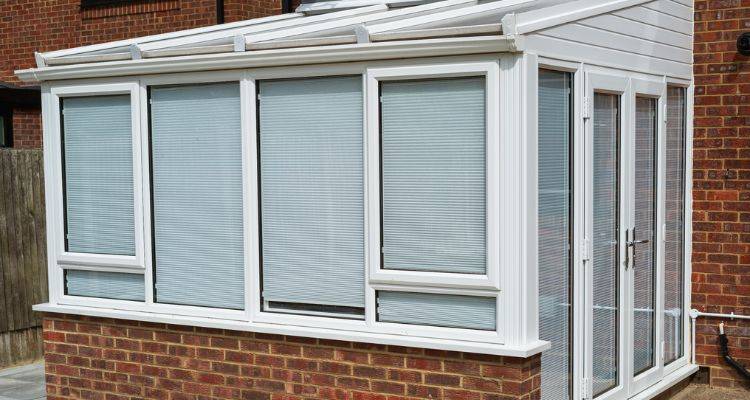
This means your lean-to conservatory must meet the following criteria:
- The conservatory is built at ground level
- The entire floor area is under 30m²
- The conservatory is separated by the main house with an external quality door or window
- The walls and roof are mostly glazed
- Any electrical work carried out has been completed by a competent Part P registered electrician
We have a glass conservatory roof. What's the cheapest way to insulate and cover it so it looks like a room with a ceiling?
Checklist: Hiring a Lean-To Conservatory Installer
When the time comes to get your lean-to conservatory built, here's what we suggest you bear in mind when choosing a trader:
- Gather at least 3 quotes from different conservatory specialists using MyJobQuote to check your local price range.
- Ensure all quotes are itemised so you can see what's included - and what's not.
- Be sure to ask about waste removal, skip hire, and scaffolding hire (if applicable) and if you need to arrange for that yourself.
- Take a look at the trader's past projects - look at photographs or videos of their projects to get an idea of the quality of their work.
- Read over the trader's customer reviews, paying attention to any comments on timekeeping, cleanliness on site, and general quality.
- Remember to ask about any warranties or guarantees associated with the build of the lean-to conservatory.
FAQs
Should I use wood, aluminium or uPVC frames?
Hardwood frames are most often used in traditional homes for their classic appearance. Aluminium is more expensive and stronger than uPVC, but uPVC is by far the most popular material thanks to its affordability. The choice comes down to personal preference, budget, and your individual requirements.
How long does it take to get a conservatory once ordered?
The average time is around 6 to 8 working weeks from making the order if planning permission isn't required.
What do I do with my old conservatory?
Before throwing your old conservatory away, you can try to sell it. There's a healthy market for second-hand conservatories, particularly aluminium-framed conservatories, which are more durable.



